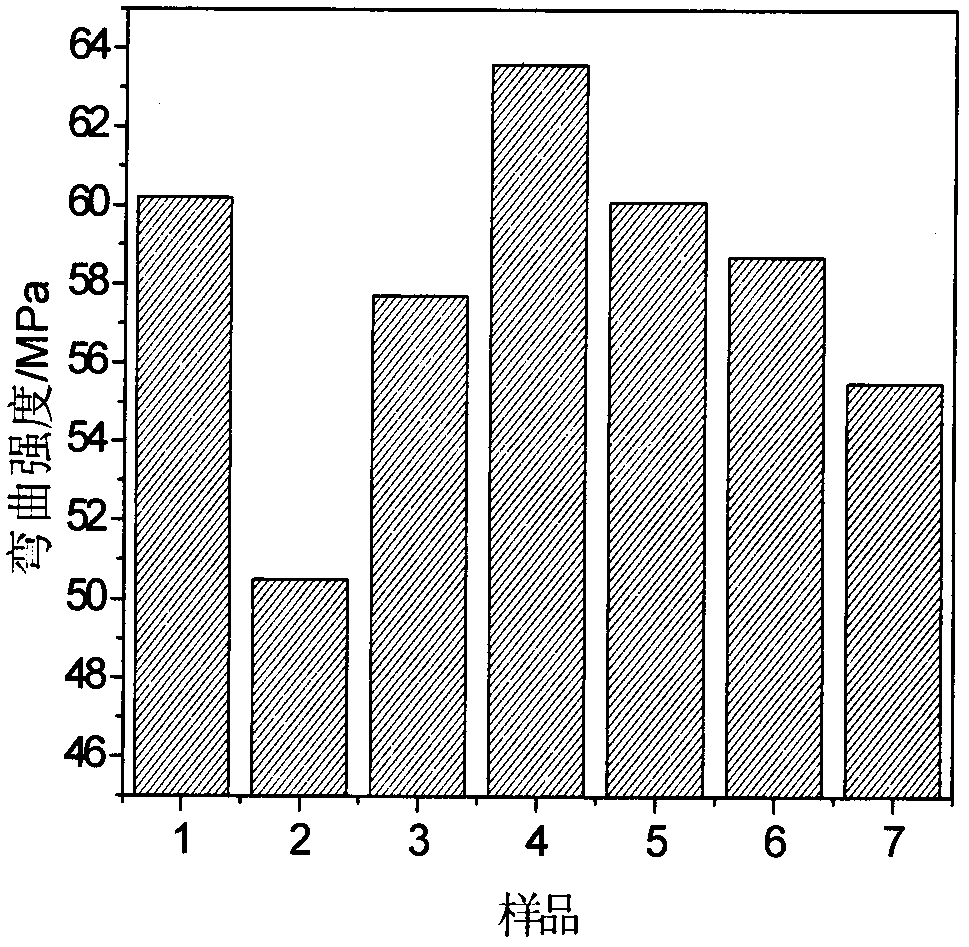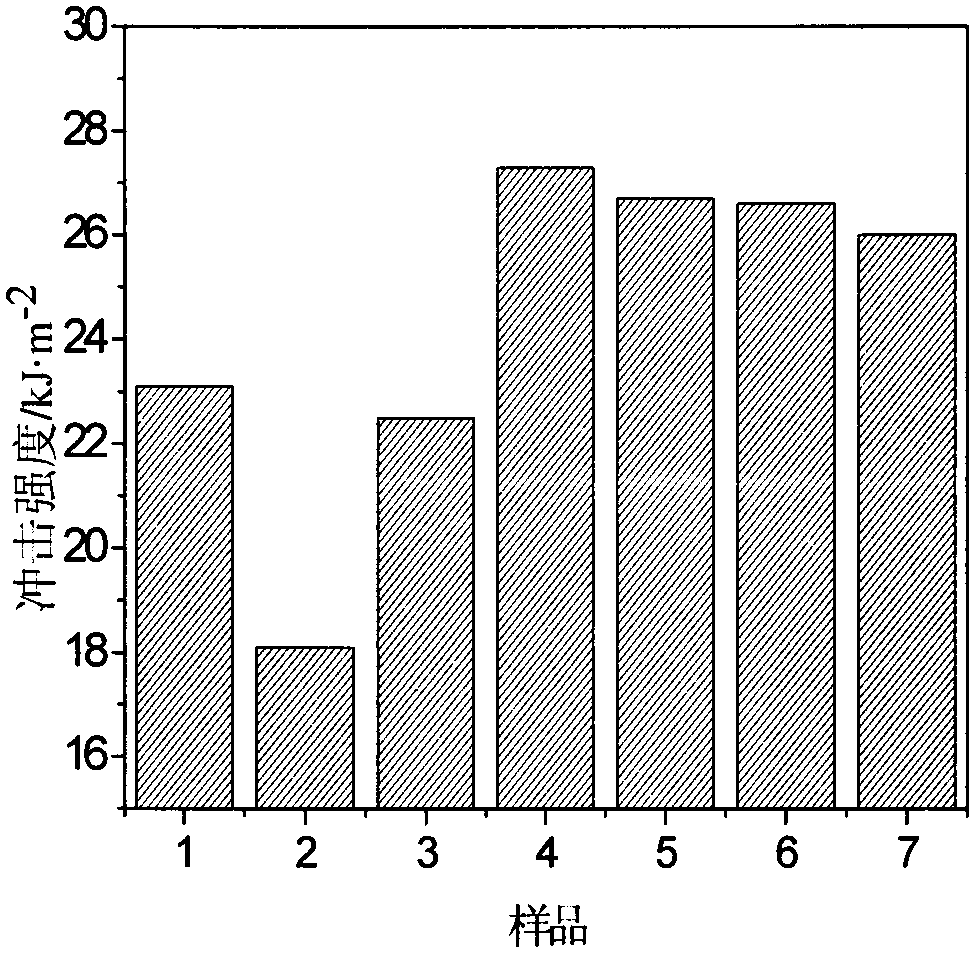Flame-retardant antistatic wood powder/polypropylene wood-plastic composite material with silane modified conductive carbon black, and preparation method of composite material
A wood-plastic composite material, flame-retardant and anti-static technology, applied in the field of wood-plastic composite material and its preparation, can solve the problems of poor anti-static performance, poor heat resistance, poor flame retardant effect, etc., and achieve improved flame retardant performance. , the effect of reducing the dosage
- Summary
- Abstract
- Description
- Claims
- Application Information
AI Technical Summary
Problems solved by technology
Method used
Image
Examples
specific Embodiment approach 1
[0023] Embodiment 1: In this embodiment, the wood flour / polypropylene wood-plastic composite material is modified by weight by 50-70 parts of wood flour (WF), 30-50 parts of polypropylene (PP), and 5-30 parts of silane Conductive carbon black (M-CB), 5-30 parts of expandable graphite (EG), 3-10 parts of m-isopropenyl-α, α-dimethylbenzyl isocyanate grafted polypropylene (m-TMI-g -PP) coupling agent and 0.1 to 1 part of antioxidant.
[0024] In this embodiment, the wood powder is poplar wood powder.
[0025] In this embodiment, the antioxidant can use antioxidant 1010, antioxidant 164 or antioxidant CA.
[0026] In this embodiment, the silane-modified conductive carbon black is made of 80-150 parts by weight of conductive carbon black and 1-5 parts of silane coupling agent.
[0027] In this embodiment, the silane coupling agent may be γ-methacryloxypropyltrimethoxysilane (KH-570) or γ-aminopropyltriethoxysilane (KH-550).
[0028] In this embodiment, the raw materials can be o...
specific Embodiment approach 2
[0030] Specific embodiment two: the difference between this embodiment and specific embodiment one is that the wood powder / polypropylene wood-plastic composite material consists of 50 parts of wood powder, 50 parts of polypropylene, and 10 parts of silane-modified conductive carbon black in parts by weight. , 20 parts of expandable graphite, 4 parts of m-isopropenyl-α, α-dimethylbenzyl isocyanate grafted polypropylene coupling agent and 0.2 parts of antioxidant 1010.
specific Embodiment approach 3
[0031] Specific embodiment three: the difference between this embodiment and specific embodiment one is that the wood powder / polypropylene wood-plastic composite material consists of 60 parts of wood powder, 30 parts of polypropylene, and 15 parts of silane-modified conductive carbon black in parts by weight. , 10 parts of expandable graphite, 8 parts of m-isopropenyl-α, α-dimethylbenzyl isocyanate grafted polypropylene coupling agent and 0.8 parts of antioxidant.
PUM
| Property | Measurement | Unit |
|---|---|---|
| Surface resistivity | aaaaa | aaaaa |
| Onset decomposition temperature | aaaaa | aaaaa |
Abstract
Description
Claims
Application Information
 Login to View More
Login to View More - R&D
- Intellectual Property
- Life Sciences
- Materials
- Tech Scout
- Unparalleled Data Quality
- Higher Quality Content
- 60% Fewer Hallucinations
Browse by: Latest US Patents, China's latest patents, Technical Efficacy Thesaurus, Application Domain, Technology Topic, Popular Technical Reports.
© 2025 PatSnap. All rights reserved.Legal|Privacy policy|Modern Slavery Act Transparency Statement|Sitemap|About US| Contact US: help@patsnap.com



